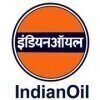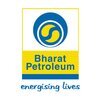
Get AmbitionBox App
Faster and better experience!
Filter interviews by
Saudi Aramco Instrument Inspector Interview Questions and Answers
Saudi Aramco Instrument Inspector Interview Experiences
1 interview found
Interview Questionnaire
3 Questions
- Q1. What is the standard hight of instrument installation
- Ans.
The standard height of instrument installation varies depending on the type of instrument and its application.
The height should be such that the instrument is easily accessible for operation and maintenance.
For example, the height of a pressure gauge in a pipeline should be at eye level for easy reading.
Instruments installed in hazardous areas should be placed at a safe distance from potential sources of ignition.
The h...
- Q2. What is the gape between electrical tray to instrument tray
- Ans.
The gap between electrical tray and instrument tray depends on various factors such as safety regulations, equipment requirements, and installation specifications.
The gap between electrical tray and instrument tray is typically determined by safety regulations and codes.
It is important to maintain a sufficient gap to prevent any electrical interference or damage to the instruments.
The specific gap requirement may vary ...
- Q3. How to do cable testing
- Ans.
Cable testing involves checking the integrity and functionality of cables used in electrical systems.
Inspect the cable for any physical damage or wear and tear
Check the continuity of the cable using a multimeter
Perform insulation resistance testing to ensure the cable is not short-circuited
Use a cable fault locator to identify any faults or breaks in the cable
Perform a high voltage test to ensure the cable can withstan...
Top trending discussions






Interview questions from similar companies

I applied via Recruitment Consultant and was interviewed in Dec 2020. There were 6 interview rounds.
Interview Questionnaire
2 Questions
- Q1. 1st round is technical , 2nd is values & behaviors , 3rd is assessment road
- Q2. Be clear on values & behaviours , practice assement round offline before attempting
Interview Preparation Tips

Assistant Manager Interview Questions & Answers
Indian Oil Corporationposted on 26 Dec 2021
I appeared for an interview before Dec 2020.
Interview Questionnaire
2 Questions
- Q1. Basic questions testing your technical skills
- Q2. Be confident with your answers
Interview Preparation Tips

I applied via Campus Placement and was interviewed in Apr 2021. There were 4 interview rounds.
Interview Questionnaire
1 Question
- Q1. Personal questions like tell me about yourself, why do you want this job etc
Interview Preparation Tips

I applied via Newspaper Ad and was interviewed before Mar 2021. There were 2 interview rounds.

Hi
Interview Preparation Tips

I applied via Walk-in and was interviewed in Jun 2021. There was 1 interview round.
Interview Questionnaire
1 Question
- Q1. About telecom
Interview Preparation Tips

I applied via Naukri.com and was interviewed in Oct 2020. There were 3 interview rounds.
Interview Questionnaire
1 Question
- Q1. The HR round was very pathetic. Sreethala took my HR round.
Interview Preparation Tips
Mumbai location. They will take all the interview rounds. The HR will ask you to submit all documents and last moment they will cancel your candidature without giving you any specific reason.

Interview Questionnaire
1 Question
- Q1. Technical questions related to inventory,scm and stock management
Interview Preparation Tips
Experience: Experience and key skills

I applied via Referral and was interviewed before Jul 2021. There were 3 interview rounds.

General information about electronic products which is used in daily life and technical questions related about the electronic equipments.
(1 Question)
- Q1. Information about yourself and Negotiation about LPA
Interview Preparation Tips

I applied via Company Website and was interviewed in May 2024. There were 2 interview rounds.
Behavioral questions and resume delve
Pmi - product management information
Interview Preparation Tips
Saudi Aramco Interview FAQs
Tell us how to improve this page.
Saudi Aramco Interviews By Designations
- Saudi Aramco Safety Officer Interview Questions
- Saudi Aramco Project Manager Interview Questions
- Saudi Aramco Engineer Interview Questions
- Saudi Aramco Senior Electrical Engineer Interview Questions
- Saudi Aramco Quality Engineer Interview Questions
- Saudi Aramco Welder Interview Questions
- Saudi Aramco Sales Trainer Interview Questions
- Saudi Aramco Warehouse Incharge Interview Questions
- Show more
Interview Questions for Popular Designations
- Instrumentation Technician Interview Questions
- Instrument Engineer Interview Questions
- Senior Instrument Engineer Interview Questions
- Electrical & Instrumentation Engineer Interview Questions
- Control & Instrumentation Engineer Interview Questions
- Instrumentation Supervisor Interview Questions
- Senior Instrumentation Technician Interview Questions
- Manager Instrumentation Interview Questions
- Show more
Interview Questions from Similar Companies
Saudi Aramco Instrument Inspector Reviews and Ratings
based on 1 review
Rating in categories
|
Project Engineer
23
salaries
| ₹24.5 L/yr - ₹52.2 L/yr |
|
Mechanical Engineer
14
salaries
| ₹4.9 L/yr - ₹19.2 L/yr |
|
Maintenance Planner
13
salaries
| ₹15.1 L/yr - ₹43.7 L/yr |
|
Safety Engineer
11
salaries
| ₹2.5 L/yr - ₹13.2 L/yr |
|
Safety Officer
11
salaries
| ₹4 L/yr - ₹12 L/yr |

Reliance Industries

Indian Oil Corporation

Shell

Bharat Petroleum
- Home >
- Interviews >
- Saudi Aramco Interview Questions >
- Saudi Aramco Instrument Inspector Interview Questions











